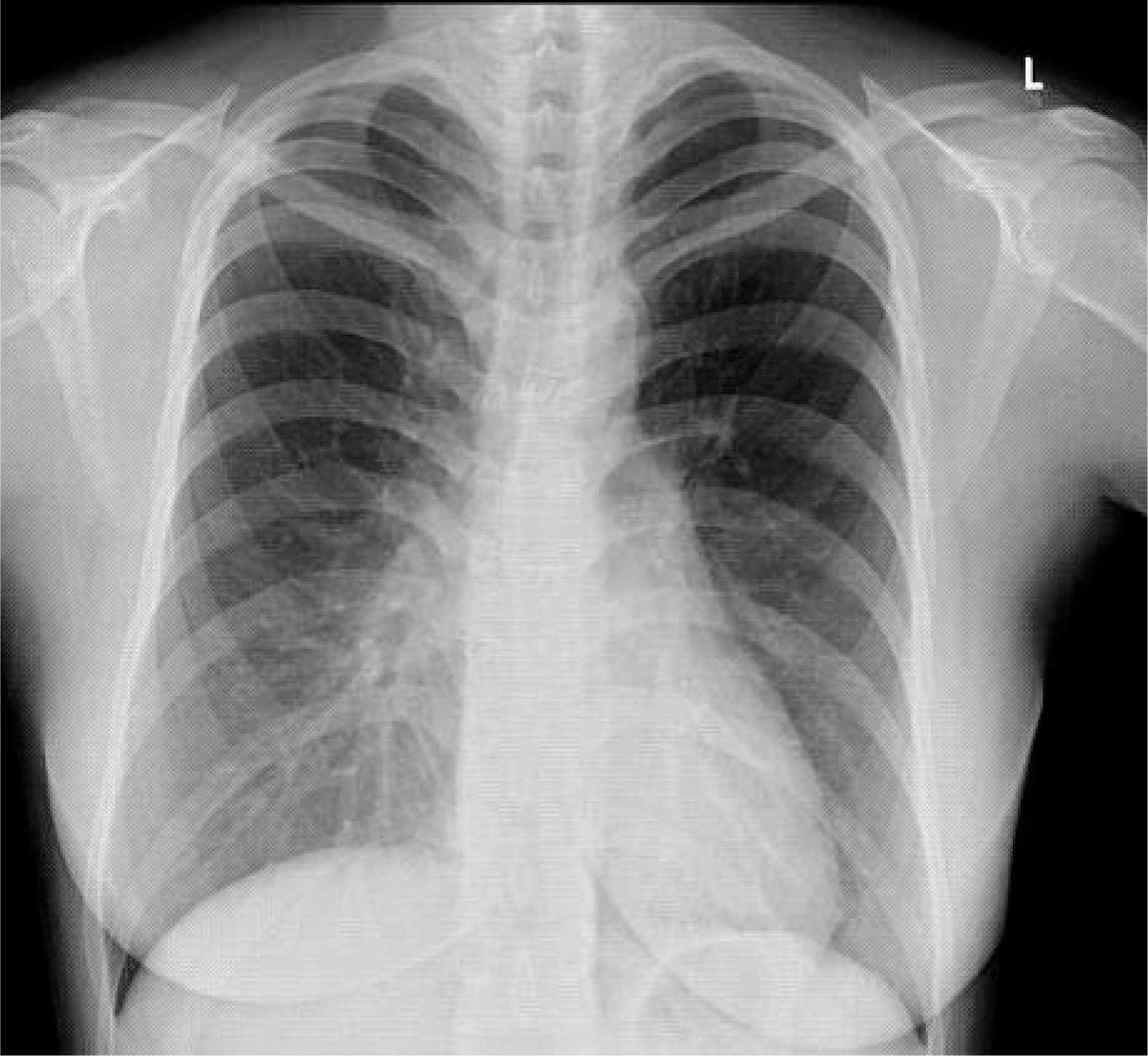ABSTRACT
Pregnant women with severe pulmonary arterial hypertension (PAH) have a high maternal mortality risk. Regardless of the PAH severity, the possibility of maternal death increases before and after childbirth. In general principle, if pregnancy happens, termination is the recommendation. Several case reports noted successful deliveries of pregnant women with PAH while using the drugs of anticoagulants, calcium channel blockers, prostaglandins, and phosphodiesterase V inhibitors. However, choices of treatment are generally achieved by clinical experiences because of no established guidelines of treatments for PAH in pregnancy. We describe a case of a 31-year-old pregnant woman with mild PAH who successfully delivered a viable newborn under close observation and without any medications. In the state of no consensus of the management for PAH in pregnancy, prior to termination or empirical drug treatments, close observation without medications could be considered in mild PAH.
Go to : 
References
1. Bedard E, Dimopoulos K, Gatzoulis MA. Has there been any progress made on pregnancy outcomes among women with pulmonary arterial hypertension? Eur Heart J. 2009; 30:256–65.
2. Weiss BM, Zemp L, Seifert B, Hess OM. Outcome of pulmonary vascular disease in pregnancy: a systematic overview from 1978 through 1996. J Am Coll Cardiol. 1998; 31:1650–7.

3. European Society of Gynecology (ESG) , Association for European Paediatric Cardiology (AEPC) , German Society for Gender Medicine (DGesGM) , Regitz-Zagrosek V, Blomstrom Lundqvist C, Borghi C, et al. ESC Guidelines on the management of cardiovascular diseases during pregnancy: the Task Force on the Management of Cardiovascular Diseases during Pregnancy of the European Society of Cardiology (ESC). Eur Heart J. 2011. 32:p. 3147–97.
4. McLaughlin VV, Archer SL, Badesch DB, Barst RJ, Farber HW, Lindner JR, et al. ACCF/AHA 2009 expert consensus document on pulmonary hypertension: a report of the American College of Cardiology Foundation Task Force on Expert Consensus Documents and the American Heart Association: developed in collaboration with the American College of Chest Physicians, American Thoracic Society, Inc., and the Pulmonary Hypertension Association. Circulation. 2009; 119:2250–94.
5. Hwang IH, Choi JW, Hwang EK, Mun CH, Min HC, Song CS. A case of primary pulmonary hypertension associated with pregnancy. Korean Circ J. 1997; 27:881–6.

6. Min HS, Chang HJ, Cho YS, Youn TJ, Chung WY, Chae IH, et al. Portopulmonary hypertension in pregnancy: Treatment with sildenafil. Korean J Med. 2007; 73:200–5.
7. Bonnin M, Mercier FJ, Sitbon O, Roger-Christoph S, Jais X, Humbert M, et al. Severe pulmonary hypertension during pregnancy: mode of delivery and anesthetic management of 15 consecutive cases. Anesthesiology. 2005; 102:1133–7.
8. Hill CC, Pickinpaugh J. Physiologic changes in pregnancy. Surg Clin North Am. 2008; 88:391–401. vii.

9. Huang S, DeSantis ER. Treatment of pulmonary arterial hypertension in pregnancy. Am J Health Syst Pharm. 2007; 64:1922–6.

10. Stewart R, Tuazon D, Olson G, Duarte AG. Pregnancy and primary pulmonary hypertension: successful outcome with epoprostenol therapy. Chest. 2001; 119:973–5.
11. Bendayan D, Hod M, Oron G, Sagie A, Eidelman L, Shitrit D, et al. Pregnancy outcome in patients with pulmonary arterial hypertension receiving prostacyclin therapy. Obstet Gynecol. 2005; 106(5 Pt 2):1206–10.

12. Elkayam U, Dave R, Bokhari SW. Primary pulmonary hyper-tension and pregnancy. Elkayam U, Gleicher N, editors. Cardiac problems in pregnancy: diagnosis and management of maternal and fetal disease. 3rd ed. New York: Wiley-Liss Inc.;1998. p. 83–90.
13. Schachna L, Wigley FM, Chang B, White B, Wise RA, Gelber AC. Age and risk of pulmonary arterial hypertension in scleroderma. Chest. 2003; 124:2098–104.

14. Lange AP. Prostaglandins as abortifacients in Denmark. Acta Obstet Gynecol Scand Suppl. 1983; 113:117–24.

15. Barash PG, Nardi D, Hammond G, Walker-Smith G, Capuano D, Laks H, et al. Catheter-induced pulmonary artery perforation. Mechanisms, management, and modifications. J Thorac Cardiovasc Surg. 1981; 82:5–12.
16. Kim SJ, Cha JH, Lee HR, Hong YM. Effects of bosentan treatment on angiotensin converting enzyme in monocrotaline induced pulmonary hypertension rats. J Korean Soc Hypertens. 2011; 17:28–36.

17. Kim WS, Park SH, Choi HJ, Han JJ. A case of sustained severe pulmonary hypertension after sugrical repair of atrial septal defect in a patient with HIV infection. J Korean Soc Hypertens. 2010; 16:35–40.
18. Humbert M, Sitbon O, Simonneau G. Treatment of pulmonary arterial hypertension. N Engl J Med. 2004; 351:1425–36.

19. Bildirici I, Shumway JB. Intravenous and inhaled epoprostenol for primary pulmonary hypertension during pregnancy and delivery. Obstet Gynecol. 2004; 103(5 Pt 2):1102–5.

20. Avdalovic M, Sandrock C, Hoso A, Allen R, Albertson TE. Epoprostenol in pregnant patients with secondary pulmonary hypertension: two case reports and a review of the literature. Treat Respir Med. 2004; 3:29–34.
21. Madden BP, Sheth A, Wilde M, Ong YE. Does Sildenafil produce a sustained benefit in patients with pulmonary hypertension associated with parenchymal lung and cardiac disease? Vascul Pharmacol. 2007; 47:184–8.
22. Task Force for Diagnosis and Treatment of Pulmonary Hypertension of European Society of Cardiology (ESC) , European Respiratory Society (ERS) , International Society of Heart and Lung Transplantation (ISHLT) , Galie N, Hoeper MM, Humbert M, et al. Guidelines for the diagnosis and treatment of pulmonary hypertension. Eur Respir J. 2009; 34:1219–63.
23. Higton AM, Whale C, Musk M, Gabbay E. Pulmonary hypertension in pregnancy: two cases and review of the literature. Intern Med J. 2009; 39:766–70.

24. Terek D, Kayikcioglu M, Kultursay H, Ergenoglu M, Yalaz M, Musayev O, et al. Pulmonary arterial hypertension and pregnancy. J Res Med Sci. 2013; 18:73–6.
Go to : 




 PDF
PDF ePub
ePub Citation
Citation Print
Print




 XML Download
XML Download